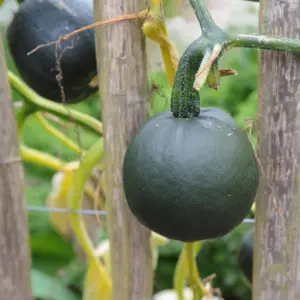South Africa, a country renowned for its diverse landscapes and rich agricultural heritage, is a treasure trove of unique produce. One such gem is the gem squash, a delightful vegetable that has found its way into the hearts and kitchens of South Africans. In this article, we will explore the fascinating world of gem squash, its cultivation, and the diverse provinces in South Africa where this culinary marvel thrives.

The Gem Squash Wonder
Gem squash, scientifically known as Cucurbita pepo, belongs to the gourd family and is a winter squash variety. Its name perfectly captures its essence – small, round, and gem-like in appearance. Gem squash has a sweet, nutty flavor and tender, creamy flesh, making it a favorite ingredient in various South African dishes.
When to Plant Gem Squash
Gem squash is a warm-season vegetable that thrives in well-drained soil and plenty of sunlight. In South Africa, the ideal time to plant gem squash is during spring, typically from September to October. Planting during these months ensures that the vegetable has enough warm weather to grow and mature before the colder winter months set in.
Cultivation and Care
Gem squash plants require adequate space to spread their vines and grow. Plant the seeds about one inch deep and 2 to 3 feet apart in rows. Regular watering is essential, especially during dry spells, to keep the soil consistently moist. Mulching around the plants helps retain moisture and suppress weeds.
Gem squash plants are generally low-maintenance, but they benefit from occasional fertilization with a balanced, organic fertilizer to promote healthy growth. Regularly inspect the plants for pests and diseases, taking necessary measures to protect the crop.
When to Harvest Gem Squash

The beauty of gem squash lies in its timing. Harvesting gem squash at the right moment ensures optimal flavor and tenderness. Gem squash is ready for harvest approximately 80 to 90 days after planting. A good indicator of ripeness is the hard, dark green skin that turns pale yellow or orange-yellow when fully mature. The skin should be firm and not easily punctured with a fingernail.
To harvest gem squash, use a sharp knife or pruning shears to cut the fruit from the vine, leaving a small stem attached. Handle the squash with care to avoid bruising or damaging the skin, which can reduce its shelf life.
South African Provinces: A Tapestry of Gem Squash Cultivation
South Africa’s diverse climate and geography create ideal conditions for gem squash cultivation in various provinces. Let’s explore how gem squash thrives in different regions of the country.
Western Cape: The Gem Squash Heartland
The Western Cape province, with its Mediterranean climate and fertile soils, is a gem squash heartland. The region’s moderate temperatures and well-distributed rainfall provide an excellent environment for gem squash cultivation. Farms in towns like Stellenbosch and Paarl yield a bountiful harvest of gem squash, making the province a significant supplier for local markets and export.
Eastern Cape: Gem Squash in the Sunshine
The Eastern Cape province boasts abundant sunshine and a diverse agricultural landscape. Gem squash plants in this region soak up the sun, enhancing the sweetness and flavor of the fruit. Farmers in areas like Addo and Grahamstown embrace gem squash cultivation, contributing to the province’s agricultural richness.
Limpopo: Gem Squash Flourishes in the Heat
Limpopo province, characterized by hot summers and mild winters, provides an ideal setting for gem squash cultivation. The warm climate allows gem squash plants to thrive, producing fruits with rich, nutty flavors. Farmers in Limpopo, particularly in regions like Tzaneen and Polokwane, capitalize on the favorable conditions, making gem squash a staple in local households.
Gauteng: Gem Squash Amid Urban Landscapes
Gauteng, the smallest but most densely populated province, doesn’t shy away from gem squash cultivation despite its urban landscape. Home gardeners and small-scale farmers in cities like Johannesburg and Pretoria cultivate gem squash in backyard gardens and community plots. The province’s agricultural diversity ensures a steady supply of this beloved vegetable to local markets and urban consumers.

Conclusion
Gem squash, with its delicious taste and adaptability to different climates, embodies the agricultural marvels of South Africa. From the Western Cape’s fertile lands to Limpopo’s sunny fields, gem squash thrives, enriching local cuisines and delighting taste buds across the country. As South Africa continues to cherish and cultivate this gem-like vegetable, its culinary legacy remains deeply rooted in the nation’s soil, offering a delightful experience to anyone who savors its unique flavor and texture.
Written by: Nicolene Oosthuizen

